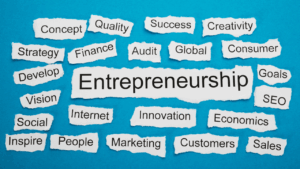
Play Text-to-Speech:
The Generative Pre-trained Transformer (GPT) models, developed by OpenAI, have marked a significant milestone in the field of artificial intelligence (AI). These models have revolutionized natural language processing (NLP) and have found applications across various industries. As we look ahead, the future of GPT holds immense potential, driven by advancements in AI research, increasing computational power, and evolving user needs. This analysis explores the anticipated developments, potential challenges, and the broad spectrum of applications that could define the future of GPT.
1. Evolution of GPT Models
1.1 Enhanced Performance and Capabilities
The future iterations of GPT models are expected to exhibit significantly improved performance. With each new version, we see enhancements in terms of language understanding, contextual awareness, and generation capabilities. These improvements will likely be driven by:
- Larger Training Datasets: Leveraging ever-growing datasets will enable GPT models to understand and generate more nuanced and contextually accurate text.
- Advanced Algorithms: Innovations in training algorithms and architectures will further enhance the model’s efficiency and output quality.
- Multimodal Integration: Future GPT models may integrate text, images, and other modalities, allowing for richer and more versatile AI interactions.
1.2 Personalization and Adaptability
As user interaction with GPT models increases, there will be a growing demand for personalization. Future GPT versions might incorporate user-specific data to tailor responses more closely to individual preferences and requirements. This adaptability will make GPT models more effective in various applications, from customer service to personalized learning environments.
2. Expanding Applications of GPT
2.1 Industry-Specific Solutions
The versatility of GPT models positions them well for specialized applications across different industries. Some anticipated areas of growth include:
- Healthcare: GPT can assist in medical diagnosis, patient communication, and personalized treatment plans by analyzing patient data and medical literature.
- Education: Adaptive learning platforms powered by GPT can offer personalized tutoring, generate educational content, and assist with grading and feedback.
- Finance: GPT models can analyze financial reports, assist in investment decisions, and provide customer support in banking and insurance sectors.
2.2 Creative Industries
The creative potential of GPT is vast. In the future, we can expect more sophisticated tools for content creation, such as:
- Writing and Journalism: Automated news generation, creative writing assistance, and real-time content editing.
- Art and Design: Integration with design tools to create visual art, generate music, and develop interactive experiences.
- Entertainment: Scriptwriting for movies and TV shows, character development in video games, and interactive storytelling.
2.3 Enhanced Human-AI Collaboration
GPT models will increasingly act as collaborative partners rather than mere tools. In professional settings, they will assist in brainstorming sessions, drafting documents, and even participating in strategic planning by providing data-driven insights and creative suggestions.
3. Ethical and Societal Implications
3.1 Bias and Fairness
One of the significant challenges in the future of GPT is addressing biases in AI-generated content. Ensuring fairness and inclusivity in AI outputs requires:
- Bias Mitigation Techniques: Developing and implementing techniques to detect and reduce biases in training data and model outputs.
- Diverse Training Data: Using diverse datasets that reflect a wide range of perspectives and experiences.
- Transparency: Increasing transparency in AI decision-making processes to build trust and accountability.
3.2 Privacy and Security
As GPT models become more integrated into personal and professional lives, concerns about privacy and data security will intensify. Future developments must focus on:
- Data Protection: Implementing robust data encryption and privacy-preserving techniques.
- Regulatory Compliance: Adhering to evolving regulations and standards for AI and data usage.
- User Control: Providing users with greater control over their data and how it is used by AI systems.
3.3 Ethical Use and Governance
The responsible deployment of GPT models involves establishing clear ethical guidelines and governance frameworks. This includes:
- Ethical Standards: Defining and adhering to ethical standards for AI development and use.
- Regulatory Oversight: Engaging with regulatory bodies to ensure compliance with laws and ethical guidelines.
- Public Engagement: Involving the public in discussions about AI’s impact on society and incorporating their feedback into policy-making.
4. Technological and Infrastructure Developments
4.1 Computational Power and Efficiency
The future of GPT is closely tied to advancements in computational power and efficiency. Key areas of focus include:
- Quantum Computing: Exploring the potential of quantum computing to enhance the training and performance of GPT models.
- Energy Efficiency: Developing more energy-efficient algorithms and hardware to reduce the environmental impact of large-scale AI models.
- Distributed Computing: Leveraging distributed computing resources to handle the increasing computational demands of training and deploying advanced GPT models.
4.2 Integration with Other Technologies
The future will see GPT models increasingly integrated with other emerging technologies:
- Internet of Things (IoT): GPT models can analyze and respond to data from IoT devices, enabling smarter environments and applications.
- Augmented Reality (AR) and Virtual Reality (VR): Enhancing AR/VR experiences with advanced AI-driven interactions and content generation.
- Blockchain: Utilizing blockchain for secure data management and provenance tracking in AI systems.
5. Conclusion
The future of GPT is both exciting and complex, characterized by rapid technological advancements and evolving societal needs. As GPT models continue to evolve, they will become more powerful, adaptable, and integrated into various aspects of daily life. However, this progress must be accompanied by careful consideration of ethical, privacy, and security concerns to ensure that the benefits of GPT are realized responsibly.
The potential applications of GPT span across industries and creative domains, promising significant enhancements in productivity, creativity, and human-AI collaboration. By addressing the challenges and leveraging the opportunities, the future of GPT holds immense promise for transforming how we interact with technology and each other.
As we move forward, it will be crucial for researchers, developers, policymakers, and the public to work together to shape the trajectory of GPT development in a way that maximizes its positive impact while mitigating potential risks.

Maintenance, projects, and engineering professionals with more than 15 years experience working on power plants, oil and gas drilling, renewable energy, manufacturing, and chemical process plants industries.











